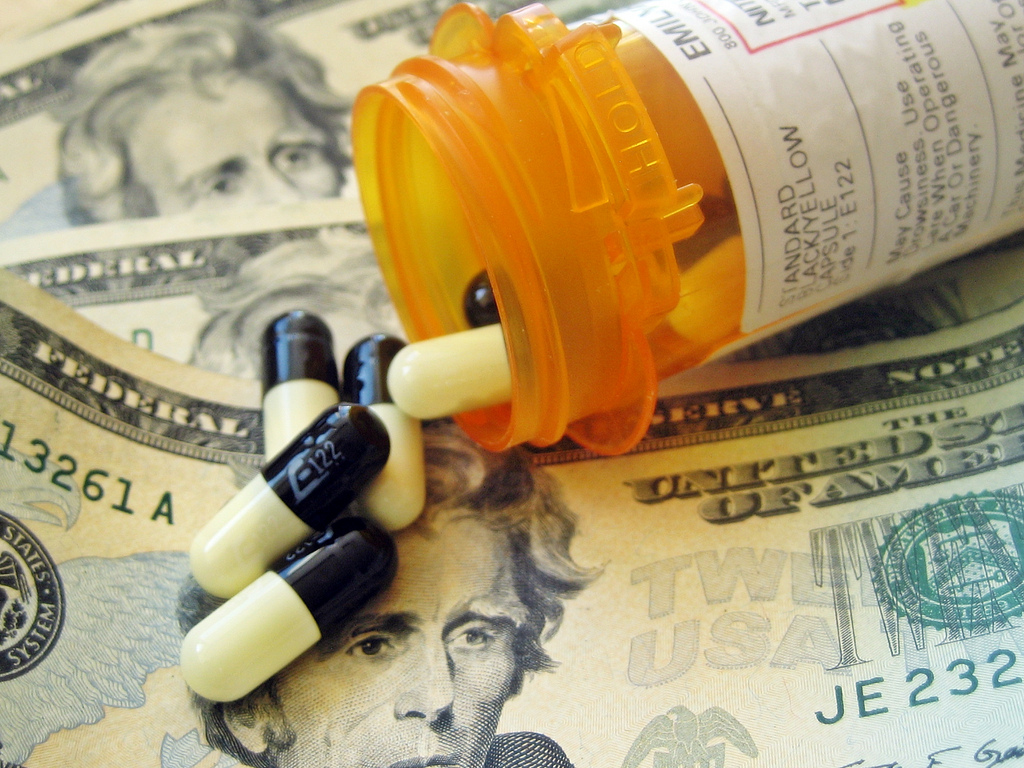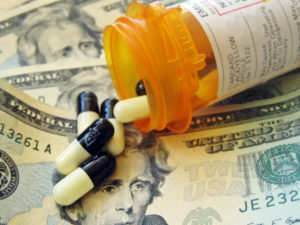Big Pharma: Ignoring Needs, Following Profits
 http://bit.ly/2rJb7CJ
http://bit.ly/2rJb7CJ

The United States is home to the largest pharmaceutical and biotechnology industries in the world and has some of the most producer-friendly policies. American Big Pharma makes up a whopping 35% of world production; the U.S. is responsible for an estimated 3,500 of the 7,000 new medicines in the worldwide biopharmaceutical pipeline. Unfortunately for many Americans, however, prescription drug prices are on average higher in the U.S. than any other country in the world by a significant margin. Why is this the case? This article takes a look at the U.S. biopharmaceutical sector and where resources are being used in the production and sale of patented medicines.
First and foremost, there is no limit on price gouging in the United States as there is in some form in all other affluent countries. Pharmaceutical companies can price their drugs at any premium, and for the 20 top-selling drugs of 2015, Americans paid $116 billion more on average than other affluent countries. Companies argue that with monopoly patents lasting only 20 years, their revenue needs to cover research and development (R&D) costs of past and future drug ventures. About only one of every 10 drugs makes it through Phase III clinical trials, FDA approval, and onto the market. American companies argue a “free rider” myth, that because “other nations with lower prices don’t pay their fair share of research and development costs,” U.S. customers have to make up that difference by paying higher prices. This is simply not the case. Reports from European countries and Canada show that their pharmaceutical companies make back their money and a healthy profit at lower price levels.
This situation largely persists in the United States because Big Pharma pays their way through by supporting political campaigns and marketing directly to healthcare providers with over $25 billion every year. With over 1,000 lobbyists in Washington supporting candidates of both parties, citizen-friendly changes are unlikely to be made without a reversal of political culture and norms. In 2003, the pharmaceutical industry struck a huge victory when Congress decided in the Medicare Modernization Act that Medicare cannot negotiate any drug prices for the 40 million people it provides for. In addition, Medicaid “must cover all drugs approved by the Food and Drug Administration, regardless of whether a cheaper, equally or more effective drug is available.” These decisions that clearly advantage producers have cost the American government and taxpayers dearly. One in five Americans report that they cannot afford to refill their prescriptions; by comparison, the next highest level among OECD countries is Germany at 9% of adults.
No matter how much Big Pharma complains about U.S. policies, strict FDA guidelines, and high R&D costs, there are a few important facts to keep in mind. U.S. employers and taxpayers actually pay about 44% of corporate R&D through subsidies and tax credits. The National Institutes for Health also complete broad research that helps lay the groundwork for pharmaceuticals to make their drugs. A 2005-2016 study published in the Journal of the American Medical Association found that major pharmaceutical companies only spend an estimated 10-20% of their revenue on the R&D that they say costs them dearly. Nine of the ten largest pharmaceutical companies spent more on marketing and sales (M&S) than R&D. Of the top 100 companies, 64 spent at least double the amount of money on M&S as R&D, 58 spent triple, 43 spent five times as much, and 27 spent ten times as much. This leads one to conclude that Big Pharma is highly profitable and has vast resources that are being used outside the production and distribution of useful and life-improving drugs.
The one caveat that might endorse the actions of U.S. companies is that they are producing life-saving drugs that drastically improve the quality of life of Americans, but this largely isn’t the case. The United States health care system ranked last out of eleven high-income countries in a 2014 study conducted by the Commonwealth Fund, with parameter categories of quality care, access, efficiency, equity, and healthy lives. Despite the massive size of the American industry and number of drugs being marketed, the health care system is still failing to provide quality care for patients. With only one out of every ten drugs making it to market, there is hope that these newly approved drugs will have a meaningful impact on the population. However, the percentage of new, innovative, and therapeutically significant drugs has declined to 10-15% of all new drugs created in the United States. Moreover, those drugs that can make a significant difference are marketed towards wealthy individuals and affluent countries.
For example, Gardasil, a vaccine that may help prevent human papillomavirus (HPV), which is tied to an increased risk of cervical cancer, is being aggressively marketed in the United States and Europe. Merck, the manufacturer of Gardasil, has been lobbying for it to become a nationally mandated vaccine in the U.S. and some affluent European countries, despite the fact that “approximately 85% of new cases and over 90% of the 270,000 [annual] deaths from cervical cancer occur in lower- and middle-income countries.” The marketing of the drug ignores the fact that the vaccine’s effectiveness is dependent upon the virginity of the patient, that efficacy still requires herd immunization, and the evidence that Gardasil prevents cancer is indirect “because the latency period of fifteen to twenty years exceeds the time since use began.” In more ways than one, resources are being misallocated in the search for profits while those in greater need of medical assistance are sidelined.
Likewise, the race to an effective therapy for hepatitis C (HCV) in the United States has been based on cracking immunity to Genotype 1 that is mainly prevalent in the United States, and largely ignores targeting effectiveness of other Genotypes (2 through 6) more prevalent in poorer nations. Furthermore, the high potential profitability of an HCV cure has led U.S. pharmaceutical companies to invest heavily individually and thus protect their data from rivals. On the other hand, non-profit organizations such as Drugs for Neglected Diseases Initiative (DNDi) and the Medicines Patent Pool (MPP) have been working toward effective treatment, access, and affordability for neglected diseases, including HCV. They have made huge strides in improving the lives of people around the world based on shared resources and knowledge, reduced patent barriers, and patient-oriented models. These organizations seem to disprove the philosophy that innovation can only be driven by access to monopoly rights over new drugs, and they successfully delink the costs of R&D from the sale price, which is solely based on manufacturing and distribution costs.
These two organizations in particular highlight an important institutional design based on a principled code of ethics. The desire to save lives and increase quality of life can drive innovative new drugs to market. There are clear practical steps that can be made to reduce drug prices, and maintain healthy profitability in U.S. companies without sacrificing patients’ needs. DNDi and MPP present a bright future for patient-oriented pharmaceuticals and biotechnology in contrast to the avariciousness of Big Pharma.
